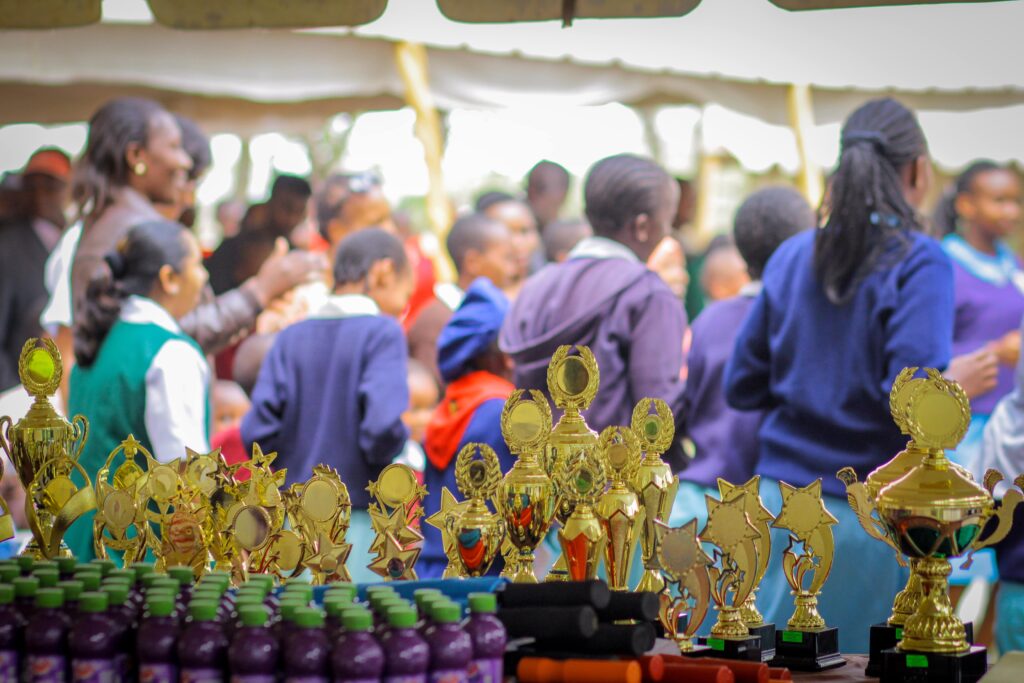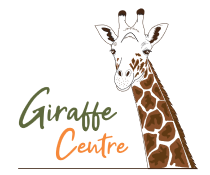Every year we host an annual Environmental competition. The competition seeks to give students a chance to give their views concerning the environment according to a set of questions and theme. We’ve marked the entries and here is the list of winners for the 2022 AFEW Kenya Annual Environmental Competition
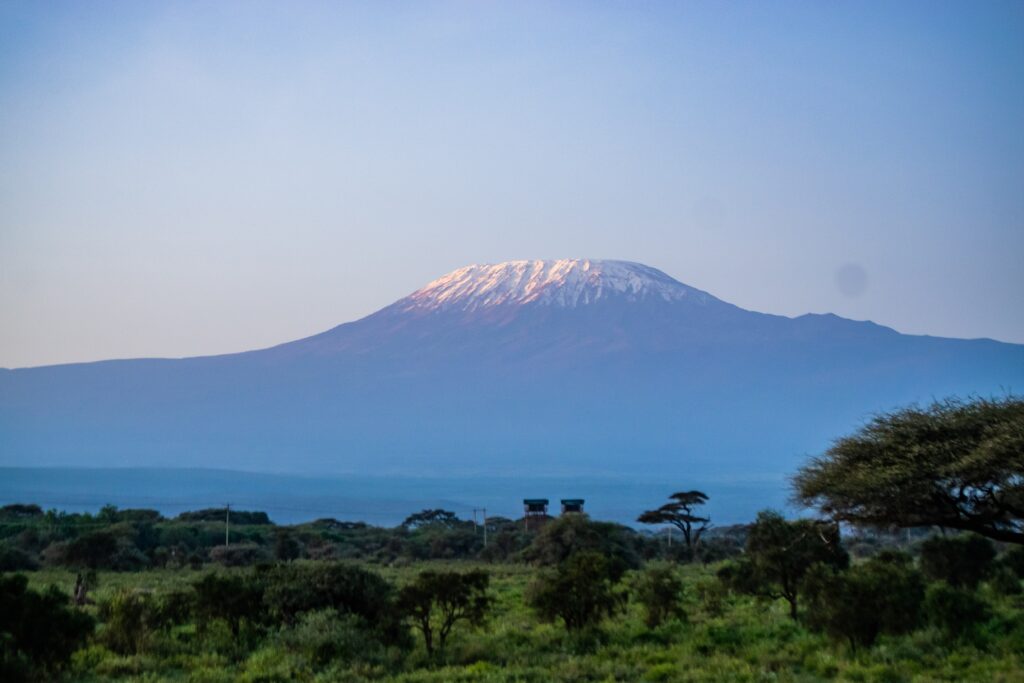
Survival is for the fittest: Hippos in Amboseli
If asked, between the Crocodile and the Hippopotamus, who is the ‘King’ of water bodies? Most likely, we’d say the crocodile. With the sharp teeth and rough exterior and accurate tail slap, that animal is pure nightmare incarnate. In fact there’s a video on YouTube of a crocodile scaring an Elephant stiff while another video shows a crocodile hunting down an adult leopard. Crocodiles are awesome and gruesome hunters yet they don’t mess with the Hippopotamuses.
With the hippo’s smooth and sensitive skin to the sun, one would think they are easy prey but they are the embodiment of the saying, ‘Kindness for weakness. With their large bodies and small legs they are awesome swimmers. In water bodies, they are fast as a whip! No human can out swim them. However, on land, they can attain a speed of 35km/hr; even Bolt can definitely win a race against them.
Crocodiles do not mess with the adult Hippos for the right reasons. Key among them being the hippo’s powerful jaws. Hippos can open their mouth as wide as up to 1.5 meters wide and have the strongest bite pressure of between 1800-2000psi. That’s like 126.55Kg/cm2 of force being applied on every bite.
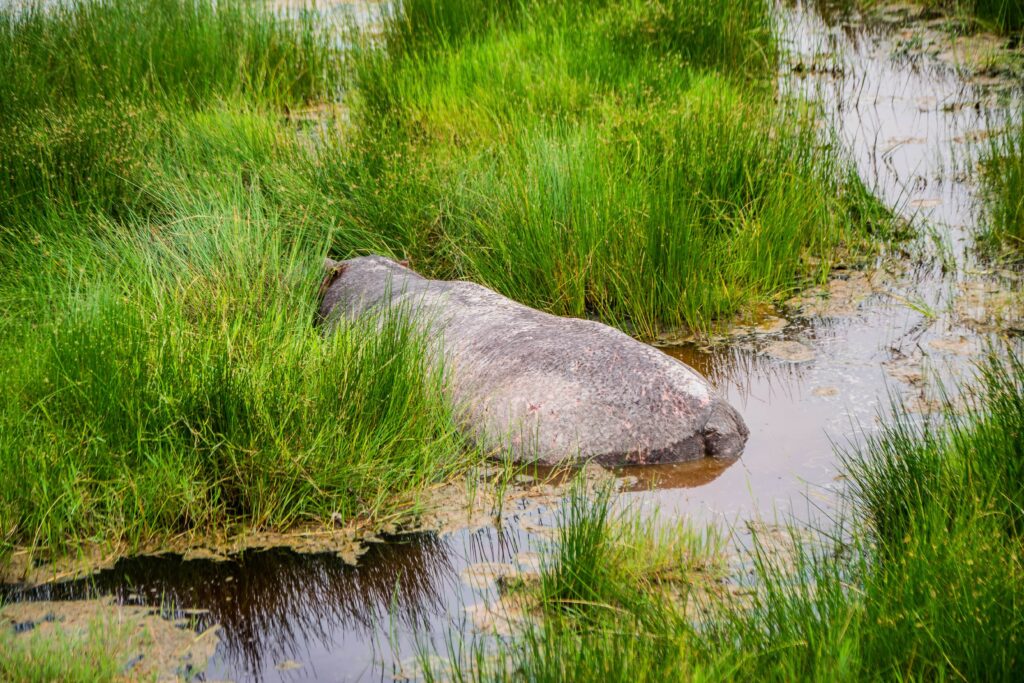
During the 2021 AFEW Kenya Winners safari, Tertiary level, to Amboseli National Park We
saw one resting. He was badly bruised such that, he couldn’t be submerged in water, leaving its
badly wounded back out in the sun.
Our Head of Conservation Education programmes, Mr. Ngumbi Emmanuel and Mr. Omondi Fidel current Intern at the Conservation Education Department proceeded to let us know of the most probable misfortune this bull met. The bull fell on the wrong side of the survival for the fittest theory. This bull must have engaged in a male dominance territorial fight with another bull within a Bloat of Hippos and lost the fight.
Hippos fights starts with a mouth opening contest; with the one with the widest and biggest mouth winning. The winner of the mouth opening contest will try to snap it back with the loser’s mouth. If the loser evades the bite and takes off; a chase will follow with the chaser trying to dig his massive teeth in the other bull’s body until the chaser is tired or the day breaks.
The stories nature behold is simply beautiful. Participate in the AFEW Kenya Competition and enjoy some of the best scenes and a lot of learning moments with us as we help to connect you with nature.
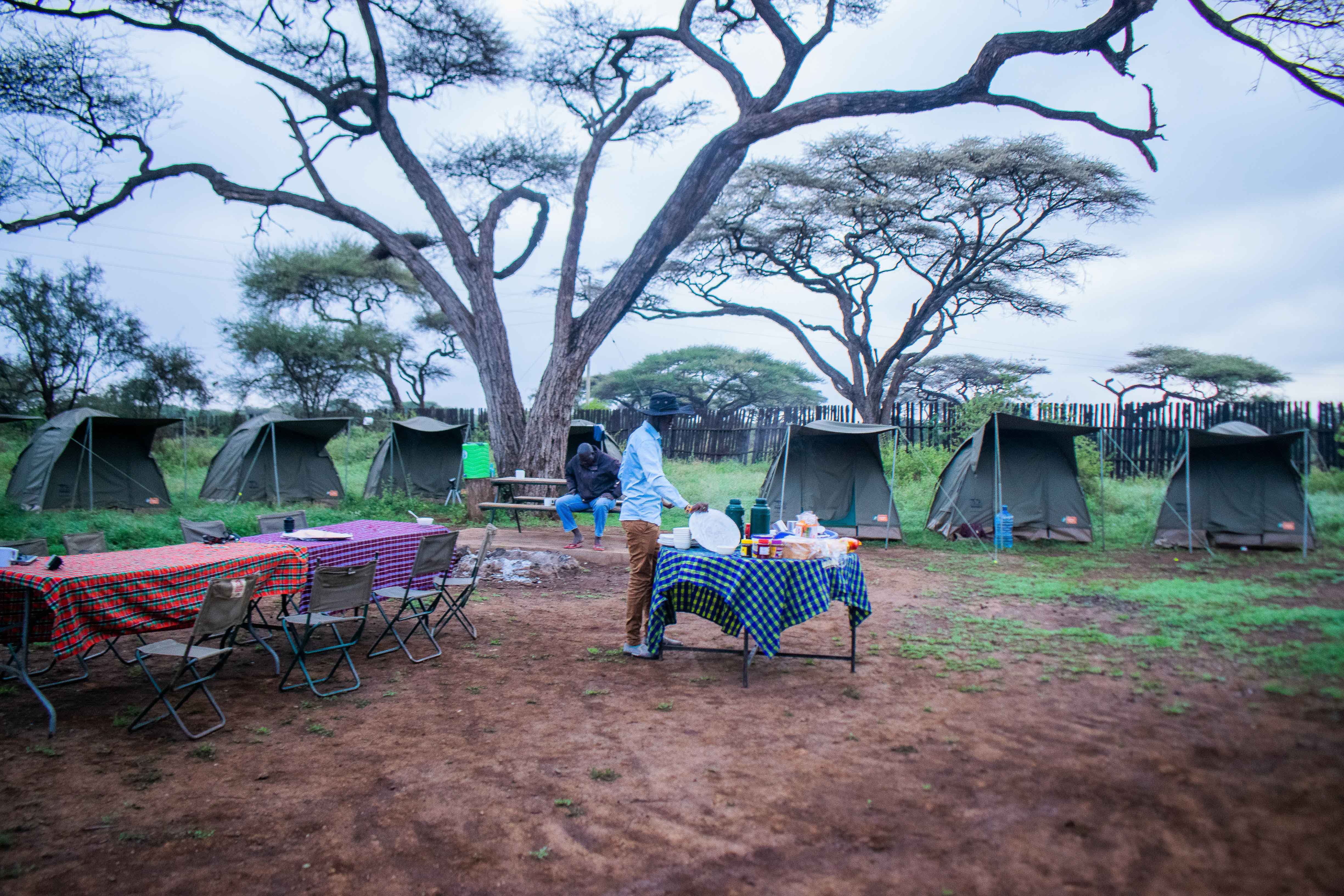
AFEW Kenya – Giraffe Centre Annual competition winners safari
in: Safari Experience by: Giraffe Centre
Lifestyle and Environment tend to go together, The more we depend on technology for our day to day lives, the more we’ll need to find ways to get the much needed energy to satisfy the ever increasing human demands. You can guess where it all comes from. With all the pressures of life, it’s very easy to overlook how our activities impact the environment. The demand for energy keeps increasing with every new generation. This calls for more engagement with the young on matters of environmental conservation so as to secure the future.
One of the ways to engage them is through picking their interest in fun and engaging activities. AFEW Kenya does this by hosting an annual Environmental Awareness
Competition under a selected environmental theme.This competition seeks to give kenyan going students a chance to air their concerns on current environmental issues and challenges affecting their world and to propose possible solutions to the same which can be undertaken at local, regional and global scales. The winners of the competition are then treated to a fully paid for Safari to different conservation areas and Parks across Kenya.
The 2021 tertiary competition winners for the tertiary level were recently treated to a 4 day safari to.Amboseli and Tsavo National parks. They had a treat of a lifetime. During the first day of the safari they got a chance to view the magnificent Mt. Kilimanjaro, the highest mountain in Africa. Amazing views of the huge but gentle jumbos from Amboseli National park. On the second day of their safari, they got a chance to explore the expansive Tsavo West National Park, with magical views of Shetani lava flow remains and the iconic Mzima Springs, not to mention the rich wildlife biodiversity.
With the Guidance of Mr. Ngumbi Emmanuel, the safari was a perfect blend of education, fun, learning culture and making new connections. Stick around and find out, nature is fascinating.
This year the theme is “Our Earth, Our only Home, Our Responsibility”. The competition ends on the 31st of March 2022
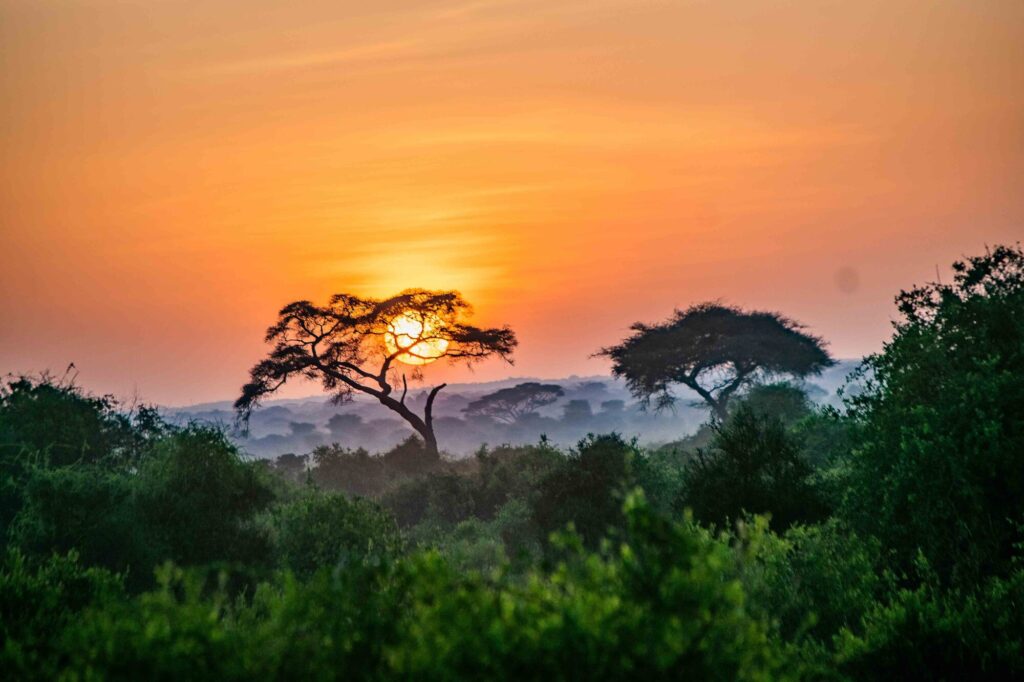
The Amboseli National Park – Maasai Community Connection
in: Safari Experience by: Giraffe Centre
Wildlife conservation in Kenya has been very dynamic in the precolonial, colonial and post-colonial period. For instance, in the precolonial period most local communities in Kenya and especially pastoral Maasai community members and their livestock lived peacefully side by side with wildlife. With the coming of the colonial masters, this dynamic changed as the colonial government of the British East African Protectorate decided to utilize legal instruments to regulate wildlife utilization and conservation in Kenya. They adopted the wildlife conservation policy which saw the creation of wildlife Protected Areas (PAs) essentially under the principle, ‘People out, Wildlife In’ for obvious reasons. This approach messed up the long held peaceful co-existence between people and wildlife as the PAs boundaries did not pay attention to the ecosystem dynamics including factors dictating seasonal pastoral community or wildlife migratory patterns and distribution of key resources within the original ecosystem. The post-colonial government adopted the same wildlife conservation policy with a few policy amendments from time to time.
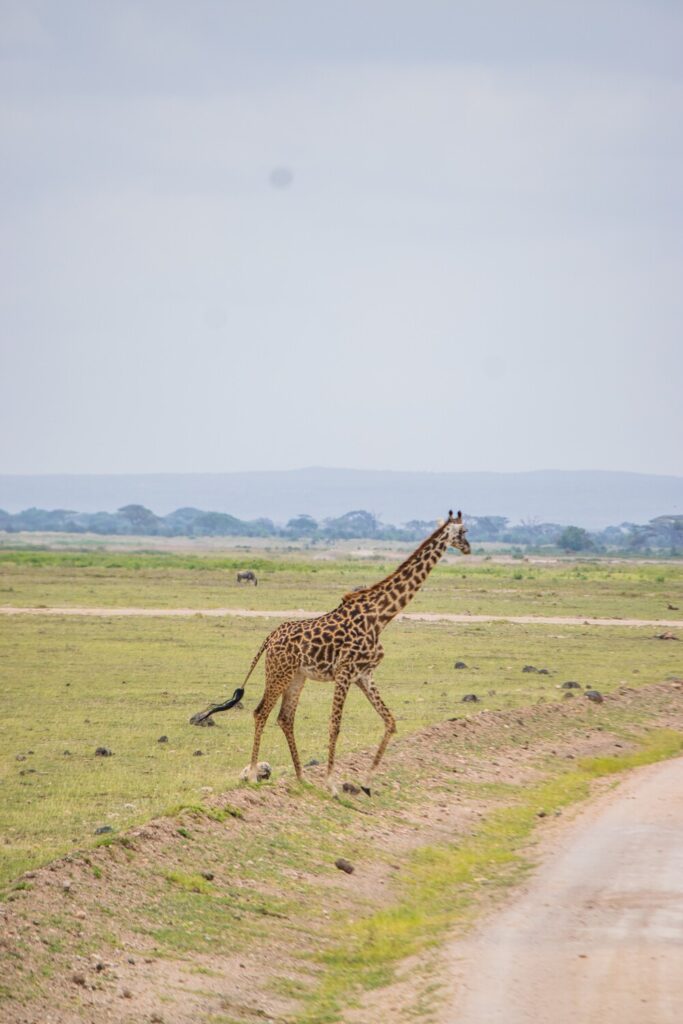
Up to date, animals especially the migratory species knows no man-made boundaries. They still wander as they have always done for generations spilling over to the adjacent local community areas and beyond. Amboseli National Park ecosystem has been a good example of this scenario. The legally protected area is only approximately 390 square kilometres but it is part of the larger Amboseli – Kilimanjaro ecosystem which covers approximately 8000 square Kilometres. Amboseli national park was declared a UNESCO Man and Biosphere Reserve in 1991 because of its critical role it plays sustaining the survival of man and nature.
Hence, the park cannot be managed as an island but its conservation must actively incorporate local adjacent community members needs and knowledge for posterity.
The Kenya Wildlife Service who are the custodians of Amboseli National Park encourages the Maasai Community who lives around the park to try and maintain land use practices which are more compatible with wildlife conservation this ensures the wildlife in the park then get to roam free on the spill areas around the park. In return, the park management have made a provision to allow the local Maasai community members to water their cattle at designated points within the park. This presents both the park and local community members with a rather important resource.
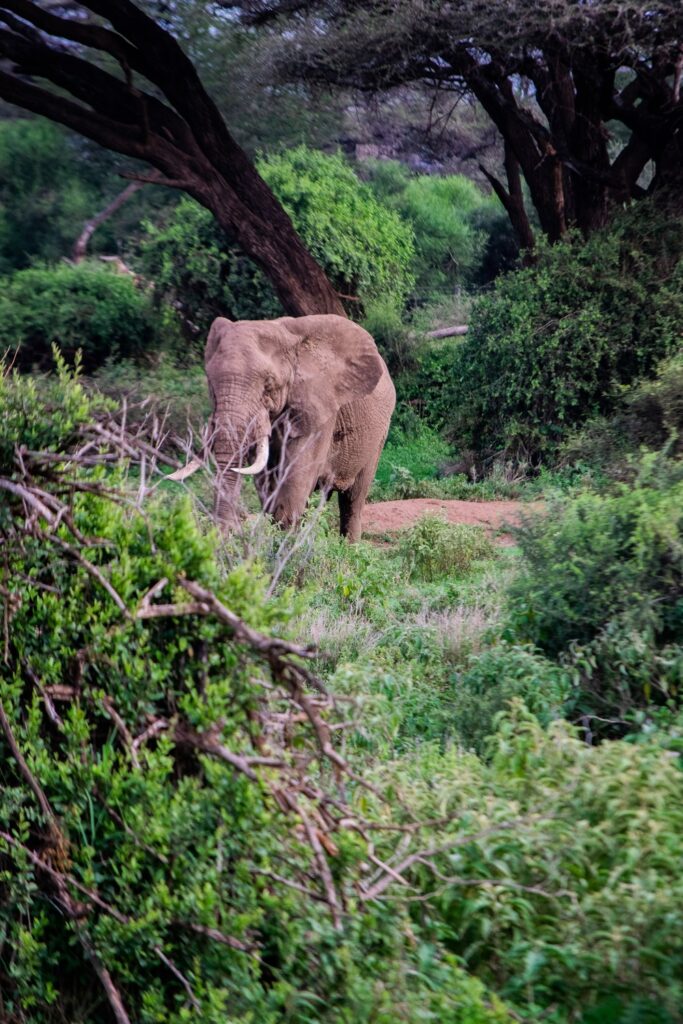
They have the community rooting for the park’s success. Also, the wild animals like the Elephants. Zebras, Giraffes, gazelles and waterbuck have grown accustomed to friendly human interaction. The kind that only leaves a minimal ecological footprint and satisfied community members and their Cattle. This a huge plus for tourism as it isn’t as hard to actually see and learn about the wildlife while at Amboseli National park. However, the carnivores are a different kind of story.
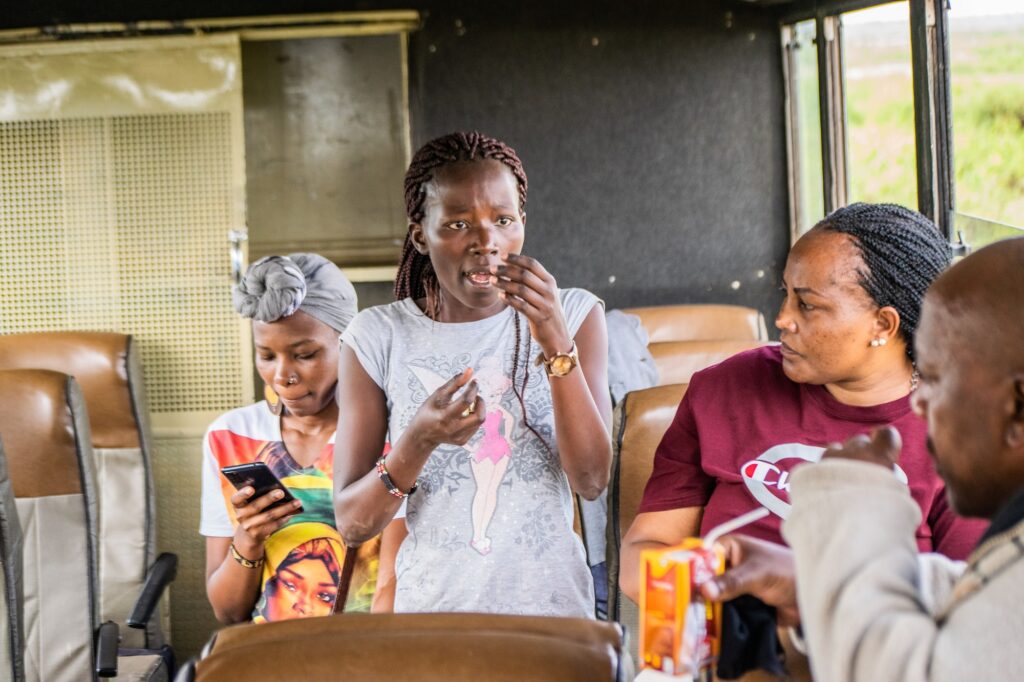
Late in February 2022, AFEW Kenya sponsored selected tertiary level students for a 4 day trip to Amboseli – Tsavo National Parks and they had treat of a lifetime. These students were the top winners in the 2021 AFEW environmental Awareness Competition.
During this trip, they got a chance to visit a Maasai village which hosts a total of 97 extended family members. Incidentally, this village constitutes the smallest village in the area. Our guide let us know of the different experiences they’ve had with the carnivores in a bid to save their livestock dead in the night. Eerie stories the Ndauo have! While this large, but small family eats meat as long as it’s today, they despise wild meat and so they do not kill wildlife for their daily survival. It’s amazing how much they value their culture and how much of it has been passed to the young generation. Do check them up on your visit to Amboseli National Park.
Written By: Angaya Kevin
Compiled By: Mr. Ngumbi Emmanuel

2022 AFEW KENYA ANNUAL ENVIRONMENTAL COMPETITION
in: Activities by: Giraffe Centre
Happy New Year. We hope and believe that you’ll have a successful year.
To start off, we have our annual competition up. The competition will be running from January 1st, 2022 to March 31st,2022.
The aim of the competition is to get students to engage in environmental conservation. The theme of the competition seeks to jog the students minds concerning current conservation issues and express them through either essays, drawing or an artistically taken photograph. The winners of the competition will get to visit some of the great conservation sites and organizations we have in Kenya.
To get the poster for the competition please click here
We wish you a prosperous 2022

NAMING GIRAFFES THE AFRICAN WAY
in: Animal Habitat by: Giraffe Centre
Literature on African Societies child naming ceremonies is quite fascinating. Mark Babatunde in his article titled 7 Most Fascinating Traditional African Baby Naming Ceremonies, describes the naming ceremony of a new baby among many African communities as one of the most important rites of passage in life as it announces the birth of a newborn, introduces the child to his or her extended family and the larger community, and above all, it confers on a child name. According to the Sweet Mother International organization, birth and child naming are the very substance that weaves the thread, binding us into something larger than ourselves, towards which all of humanity gravitates.
Different African Sociology Scholars have described child birth and naming as joyful communal affairs, quite universal and persistent across generations. However, traditions vary with a given community, time and region. The two events have great significance for life perpetuation of the community in the future. As the new generation can offer that support to the old generation when they need support in old age.
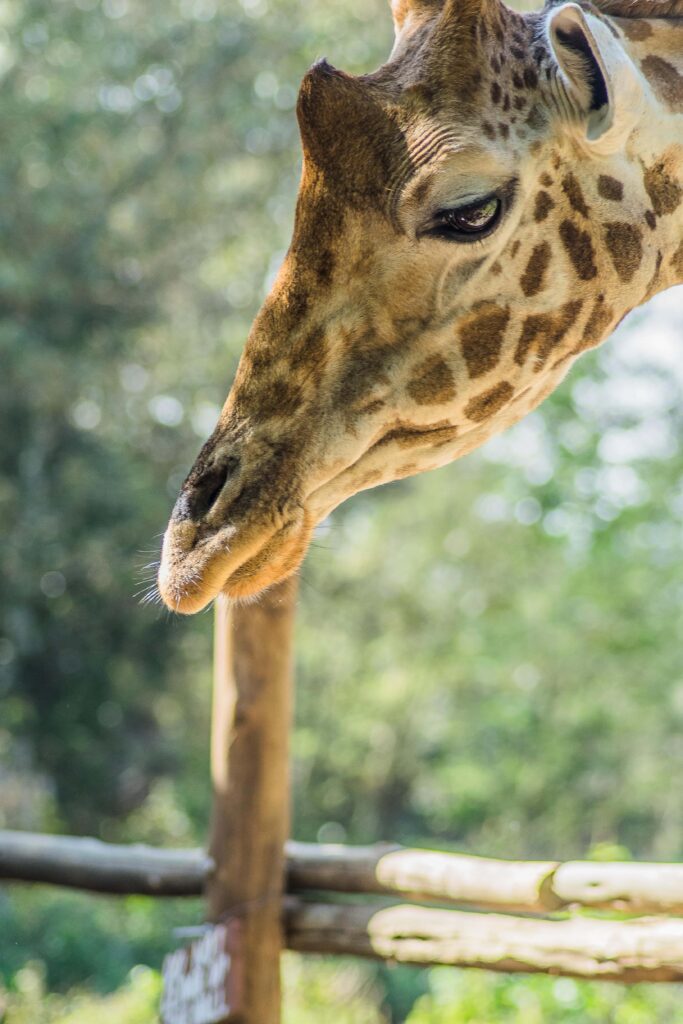
Giraffe naming process is not new at AFEW Kenya – Giraffe Centre as it started way back in 1979 at the time when the idea of saving the Rothschild’s giraffes from western Kenya was born. Betty Leslie Melville, the co-founder of AFEW Kenya named the first two young giraffes brought to their property in Lang’ata, Nairobi as Daisy and Marlon. Daisy was named after her favorite flower ‘Daisy” which grew abundantly within her home compound. From 1979 – 2017, all giraffes born or brought to Giraffe Centre were given names of people from different parts of the world who in one way or another have made a major contribution to AFEW’s conservation work.
However, from 2017 this naming process was changed in favour of adopting a universal giraffe naming system. The new naming system use Kiswahili names of flowers and trees. With the adoption of the new naming system, female giraffes are named after flowers while male giraffes are named after trees to represent their femininity and masculinity nature respectively. Active involvement of the general public has been at the core of this process. Members of general public are allowed to suggest or choose their most preferred giraffe name through AFEW’s social media platforms.
Just like in traditional African society, when a child is born, midwife normally announces the birth of the newborn child to the larger community. In most instances, the parents hold celebrations in appreciation to the creator for the gift of a newborn. Many people in the community including relatives, friends and neighbors will from time to time come to celebrate and rejoice with the family. They also bring different gifts for the mother and newborn child. Offering gifts to the newborn is done among African communities as a way of showing love, friendship and blessings to the child, mother and community

AFEW – Giraffe Centre would like to invite the general public in the virtual naming of three female giraffe calves. This event will be held on Monday, June 21st, 2021 as part of commemorating the World Giraffe Day which is normally marked every year on June 21st. Feel free to follow the link below and join us in celebrating these giraffe calves. We would also like to appeal to the general public to make financial contributions as gifts towards celebrating milestones made towards saving Rothschild’s giraffe from silent extinction. Send contributions of at least KShs.1000 equivalent to USD 10 towards this worth cause. All proceeds will go towards giraffe welfare management and eventual return to the wild of the young giraffes once they attain the recommended giraffe translocation age by Kenya Wildlife Service.
Why should you participate in this giraffe naming programme?
- You will receive acknowledgement for your support/contribution with your name appearing on the list of sponsors during the naming ceremony.
- You will receive regular updates of the named giraffes from AFEW Kenya.
- You will be invited to witness the eventual translocation of the same giraffes from the Giraffe Centre to a selected suitable habitat as part of the reintroduction back to the world to increase the natural population of Rothschild’s giraffes in Kenya.
To support the conservation of the Rothschild Giraffe, use this link to the platform to use for sending your contribution.
https://www.giraffecentretickets.co.ke/donation
References
- https://face2faceafrica.com/article/7-fascinating-traditional-african-baby-naming-ceremonies
- https://www.bbc.com/news/world-africa-37912748
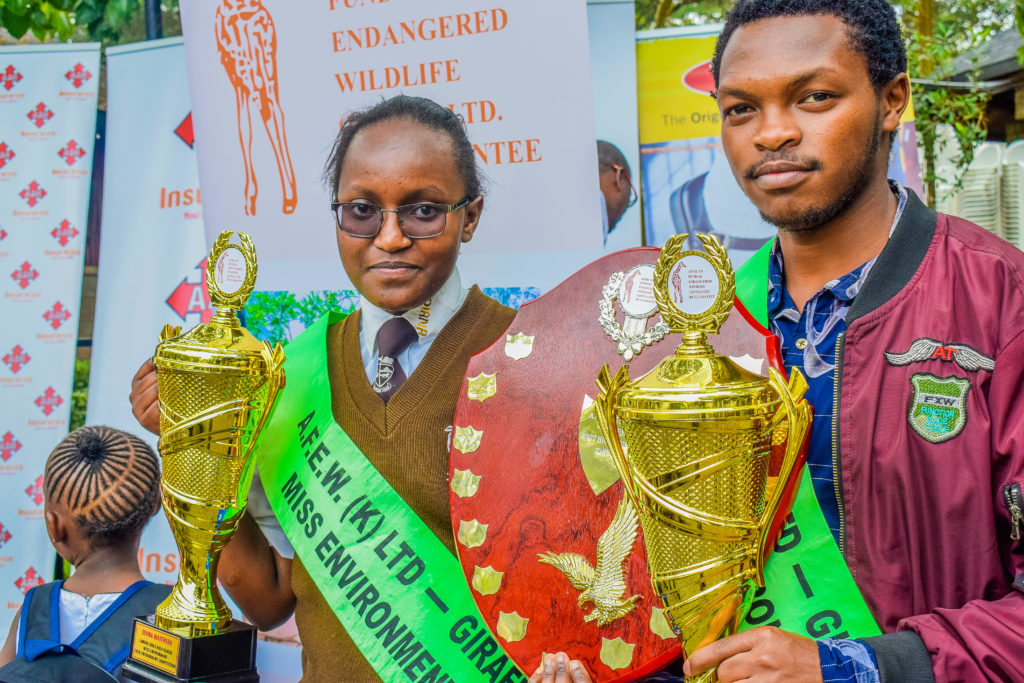
2021 AFEW Kenya Environmental Competition Results.
in: Announcements by: Giraffe Centre
Every year, we host an environmental competition from the 1st of January to the 31st of March. This year, like tradition, we did host the competition.
We are grateful to every student who sent in their entries.
Click here to see the 2021 AFEW Kenya – Giraffe Centre Competition winners.
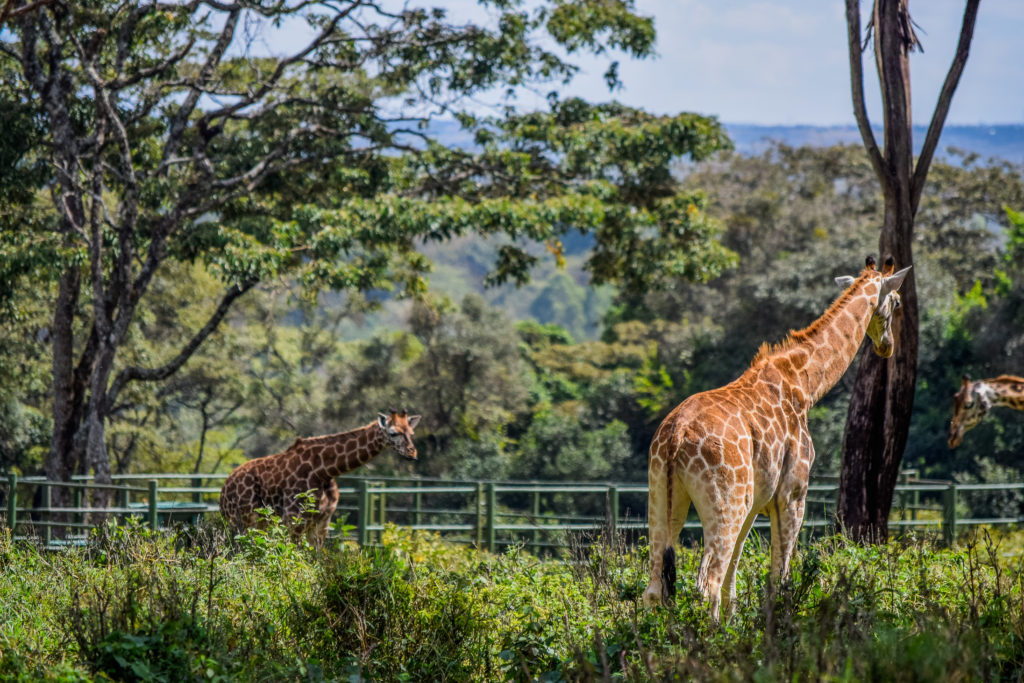
Stopping the Silent Extinction
in: Animal Habitat by: Giraffe Centre
March 3rd every year is set aside by the UN as the International day of Wildlife. This day is a day to reflect on how far we have come in taking care of Wildlife: Flora and Fauna. It’s also a day to get to know and experience the life of people who have dedicated their lives to caring for wildlife. If you got the chance to do that, Kudos. If you didn’t, let me take you, for a couple of minutes, on how tough it is to treat a giraffe..
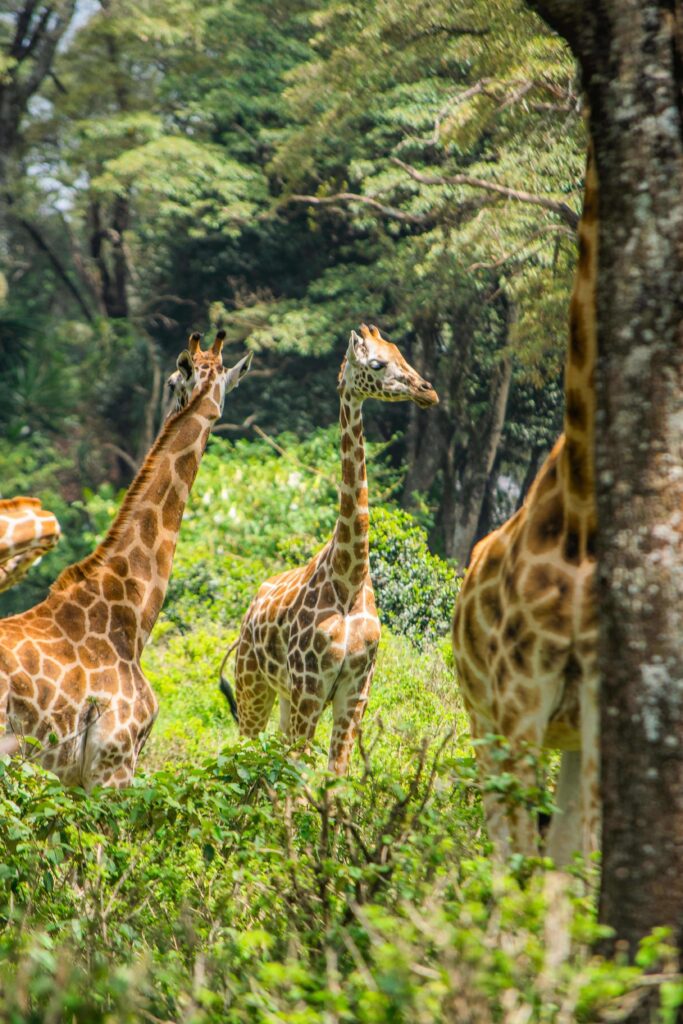
Do you see how calm and gentle giraffes are? Think of that friend who terribly betrayed your friendship and all that is left is simply a food relationship only. The kind that ‘I will not know anything about you except when you are hungry’ kind of relationship. That’s exactly how giraffes are. Lily, Stacy’s calf, had an injury on her lower lip as she was browsing at our nature sanctuary. She wouldn’t notify us. However, We were able to note the injury and notify the Kenya Wildlife Service veterinary unit for further investigation, analysis, and treatment, thanks to our observant conservation team.
Finally came the day to treat our beloved Lily. She is 3 meters tall with a crazy ability to camouflage very well in our nature sanctuary. This reminded me of the good old days of the ‘Hide and Go seek’ game. Treating a giraffe is an essential but risky affair. Due to their unique anatomy, especially the long neck, giraffes generate high blood pressure three times higher than humans, how massive are their heart is! Their hearts measure 2ft by 1 ft and weighs up to 11 Kgs. So, darting them has to be the last option if capture tricks do not suffice. Imagine that for a second. Also, they kick on all sides. Capturing and administering medicine to a giraffe becomes a suicide mission if you are not careful about how you approach them. One good and accurate kick can kill an adult lion.
Sometimes, there are those clever and cynical giraffes, like Lily, who wouldn’t take kindness at face value. For them, darting correctly might be the last yet efficient way to give them their medication
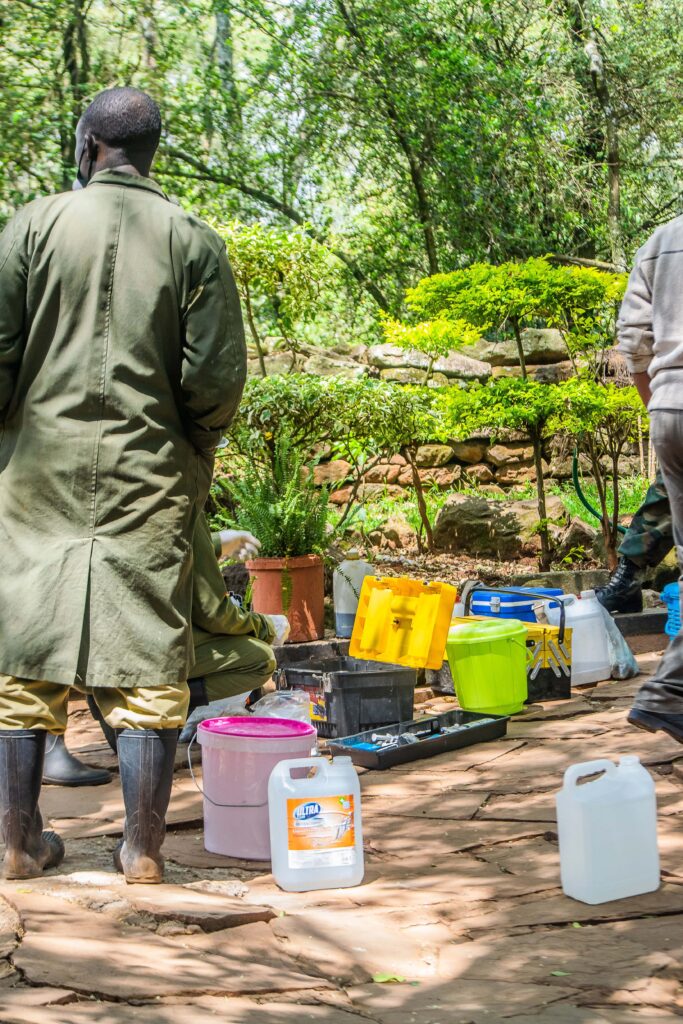
Even though it’s a less dangerous option, the only opposition yet very efficient and effective is time. The time between Lily being darted and her losing consciousness was very critical. what Lily did was first to ensure safety in the numbers by getting closer to the tower of giraffes. Upon being darted she slowly started losing consciousness., she started walking away into the thicker parts of our sanctuary. Then, the tower turned to a journey and eventually into a sprinting session with Kenya Wildlife Service team in hot pursuit to make sure wherever she dropped to the ground was safe.
This turned from racing against her safety to treating her before gaining her full consciousness which would be twice as lethal She’d be angry and she’d get to kicking every human in her vicinity.
Finally, The KWS Veterinary unit officials were able to treat her wound and took samples for further analysis and investigation.
that was a great day for wildlife conservation and a good day for giraffes who are deemed to be facing the silent extinction.
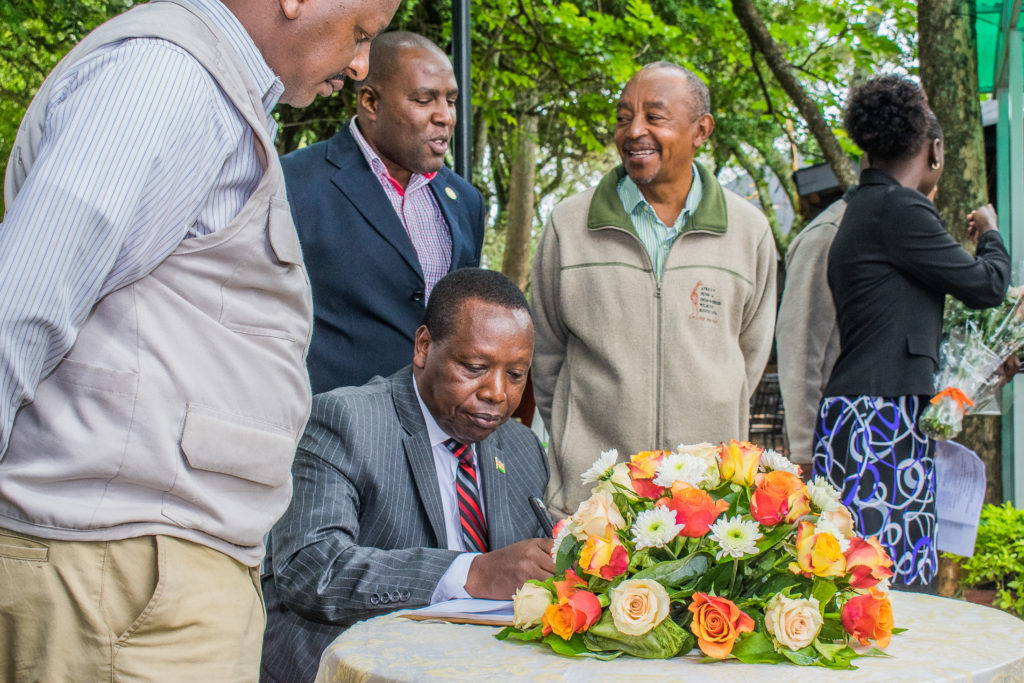
2021 AFEW Kenya – Giraffe Centre Annual Environmental Competition
Every year, AFEW Kenya – Giraffe Centre hosts an environmental competition that seeks to get student views on various environmental issues of the day.
This year, our environmental competition theme is the same as last year’s competition, which is “Healthy Planet, Healthy People, Healthy Future.”
To get the poster, click here. If you know a student or a school in our country Kenya, kindly recommend this competition to them.
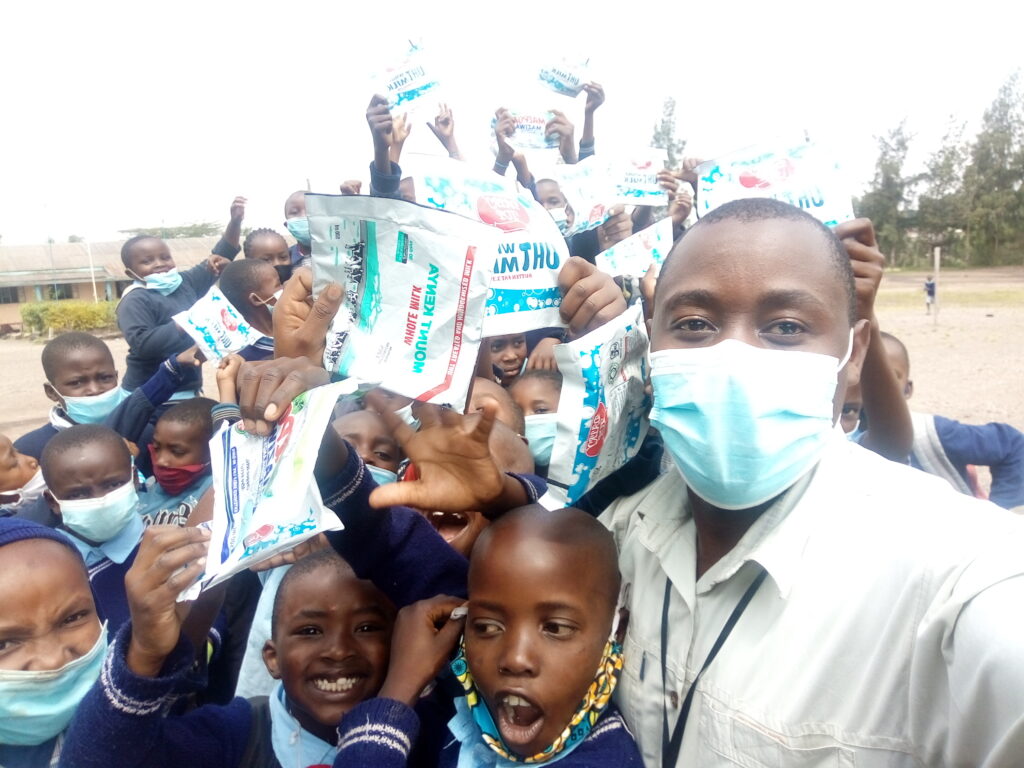
Naromoru Primary School
in: Activities by: Giraffe Centre
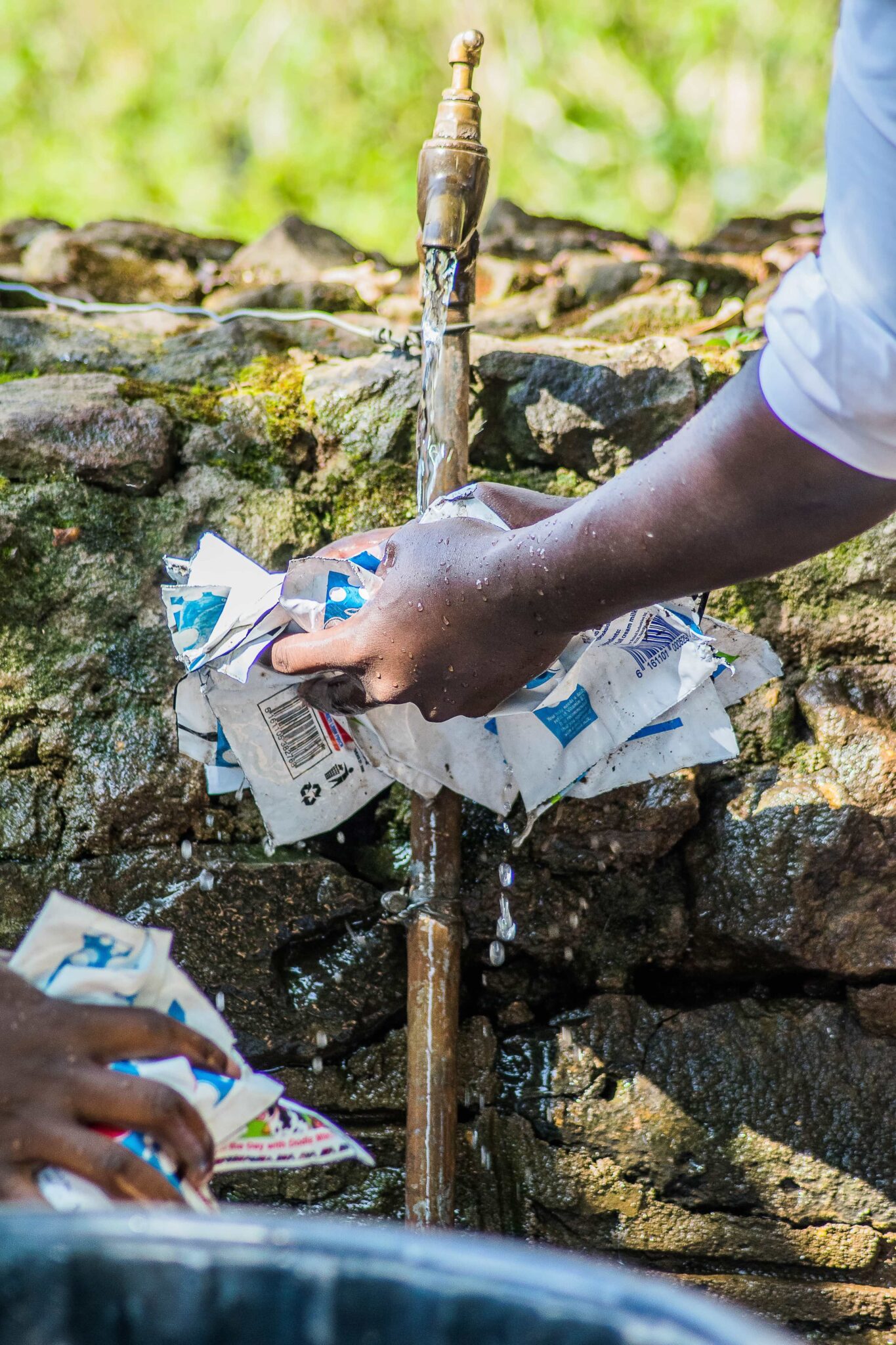
One’s poison is another’s food, as it’s said. Even to be more appropriate, ‘one’s waste is another’s resource.’ If you ever were an active member in school clubs and activities like inning and outings for whatever event, be it sports day, science congress, drama, and so on, lunch was a loaf of bread and either a 300ml bottle of soda or a packet of milk. Or was it just my school?! no?! okay! This simple meal would make an ‘A’ student cry if they missed. This meal, among other reasons, would make a form 4 student deny a form 1 their rightful and lawful chance to participate. Reason, well, age and how many trips they both have left. Age wasn’t just a number.
Well, the good old days. The question is, how did your school manage the waste produced from the fun and/or educational trip. Was it like this?
In a town called Kiserian, deep in the heart of Kajiado county, where a good number of Nairobians get their weekend delicacy, Ugali Nyama choma, lies Naromoru Primary School. The school administration in collaboration with the students, kept their milk packets from their trips and school use. They managed an over 2,000 milk packets of waste well.
This school has made sure that their school environment is clean since their waste is well managed. Also, since where they are located some people have cattle, this school has made sure that their cattle has 2000 milk packets less risk of constipation

We, on the other hand, were in need of packets for potting tree seedlings for our tree nursery. They heard of our need for packets and contacted us. Thanks to Naromoru Primary School, we are sure of increasing our tree nursery by at least 2000 trees. With them managing their waste well, we have over 2000 milk packets of resource for our tree planting project.
We have a quest to plant even more trees at our sanctuary in Karen, Hardy area. These trees are for education, giraffe feeding, and distribution to schools across the country. We need, as a country to increase the forest cover to 10% and over for our benefit and the benefit of the future generations.
So, contact us if and when you have milk packet waste.
